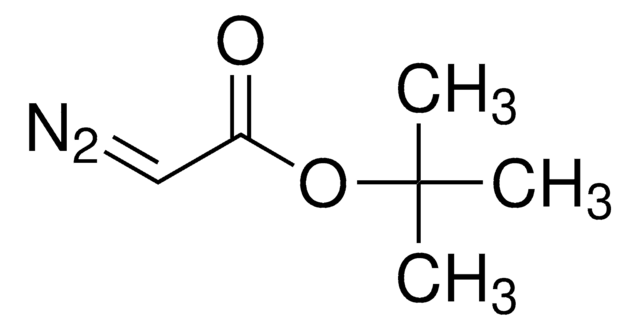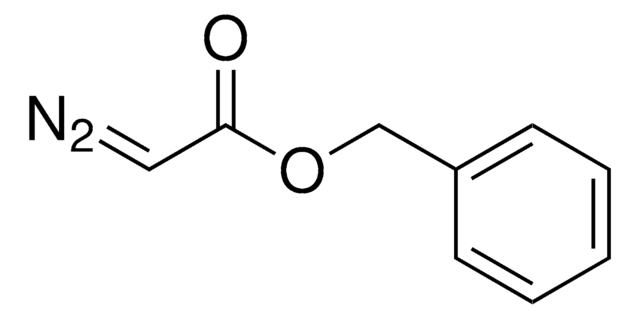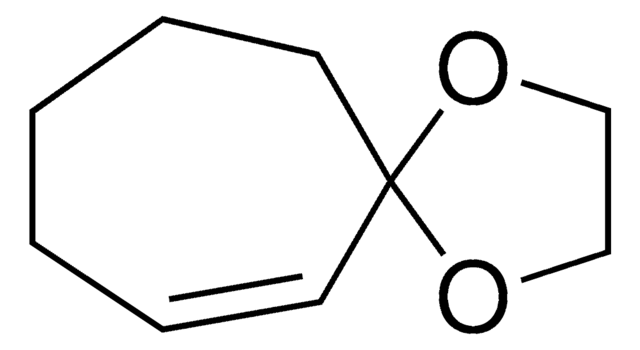E22201
Ethyl diazoacetate
contains ≥13 wt. % dichloromethane
Synonim(y):
DAAE
About This Item
Polecane produkty
Postać
liquid
Poziom jakości
zawiera
≥13 wt. % dichloromethane
współczynnik refrakcji
n20/D 1.46 (lit.)
tw
140-141 °C/720 mmHg (lit.)
mp
−22 °C (lit.)
gęstość
1.085 g/mL at 25 °C (lit.)
temp. przechowywania
2-8°C
ciąg SMILES
CCOC(=O)C=[N+]=[N-]
InChI
1S/C4H6N2O2/c1-2-8-4(7)3-6-5/h3H,2H2,1H3
Klucz InChI
YVPJCJLMRRTDMQ-UHFFFAOYSA-N
Szukasz podobnych produktów? Odwiedź Przewodnik dotyczący porównywania produktów
Powiązane kategorie
Zastosowanie
produkt powiązany
Hasło ostrzegawcze
Warning
Zwroty wskazujące rodzaj zagrożenia
Zwroty wskazujące środki ostrożności
Klasyfikacja zagrożeń
Acute Tox. 4 Oral - Carc. 2 - Eye Irrit. 2 - Flam. Liq. 3 - Self-react. E - Skin Irrit. 2
Kod klasy składowania
5.2 - Organic peroxides and self-reacting hazardous materials
Klasa zagrożenia wodnego (WGK)
WGK 3
Temperatura zapłonu (°F)
116.6 °F - closed cup
Temperatura zapłonu (°C)
47 °C - closed cup
Certyfikaty analizy (CoA)
Poszukaj Certyfikaty analizy (CoA), wpisując numer partii/serii produktów. Numery serii i partii można znaleźć na etykiecie produktu po słowach „seria” lub „partia”.
Masz już ten produkt?
Dokumenty związane z niedawno zakupionymi produktami zostały zamieszczone w Bibliotece dokumentów.
Klienci oglądali również te produkty
Nasz zespół naukowców ma doświadczenie we wszystkich obszarach badań, w tym w naukach przyrodniczych, materiałoznawstwie, syntezie chemicznej, chromatografii, analityce i wielu innych dziedzinach.
Skontaktuj się z zespołem ds. pomocy technicznej












![(1R,8S,9s)-Bicyclo[6.1.0]non-4-yn-9-ylmethanol for Copper-free Click Chemistry](/deepweb/assets/sigmaaldrich/product/structures/171/632/0556139a-2db5-4678-a6ec-a26a693fd574/640/0556139a-2db5-4678-a6ec-a26a693fd574.png)